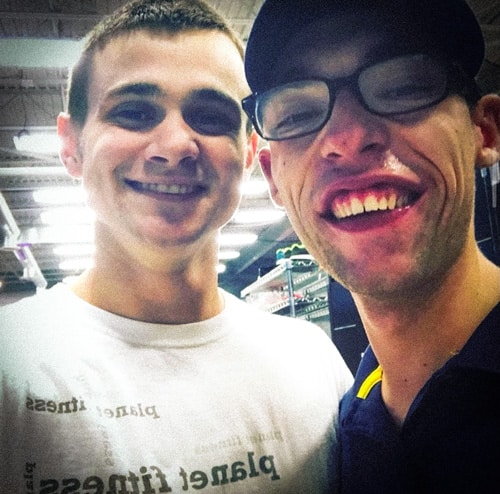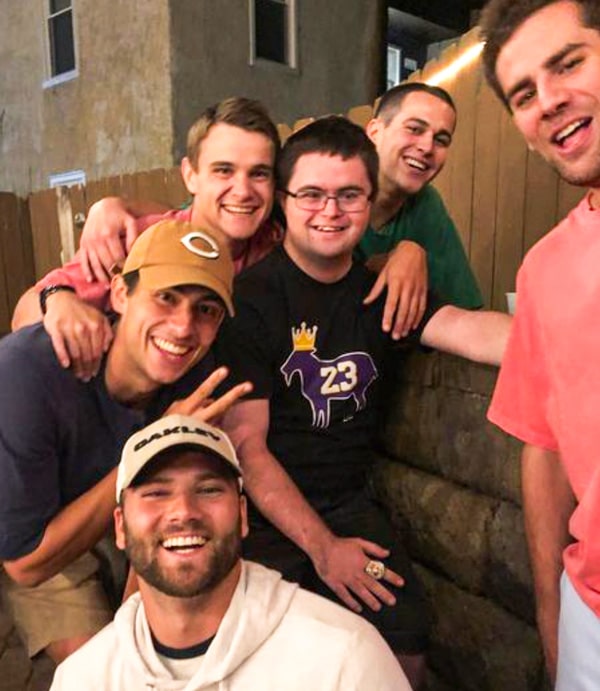Most people are familiar with the concept that practicing gratitude consistently = a happier general state of being. The science shows that it is impossible to be using your brain to consider what you are grateful for and simultaneously be upset, angry, feeling depressed, etc. To go one step further, scientists discovered that simply asking yourself “what am I grateful for,” and thinking about that causes positive activity in the brain, even if the answer isn’t there. So quite literally, even if you had nothing to be grateful for (which I know is not the case), the start of a gratitude practice can make a positive impact on your well-being.
With that being said, it’s important to highlight how making it a priority to involve yourself with the special needs and disabled communities can impact your ability to become a person of gratitude. Essentially, becoming someone that focuses more on what you’re grateful for and what’s going well in life than the alternative. I’d like to do this by sharing a personal story with you, which dates back to my first real involvement with the special needs community.
I met my friend Stephen Cornell during my junior year of high school. I attended an after school club for students with special needs and/or disabilities with one of my friends, and I was nervous to go. I wasn’t sure what to expect and as we all know, the unknown can be a scary thing, particularly when you’re 16 years old and typically care far too much about how you will be perceived by others. I was nervous that I would be viewed as somewhat of an outsider to the group by my typically-functioning peers, and that it would be difficult to connect with the students with special needs. As it turned out, I was entirely wrong on both fronts, particularly as it relates to the students with special needs. Every one of them welcomed me with open arms, they were excited to have me there, and it almost felt as if they already knew me and were just waiting for me to finally show up and join the club. I made several positive connections that day, but none that would prove to be more meaningful in my life than the connection to Steve. He deals with severe cognitive disabilities that make it extremely difficult to process information quickly and communicate effectively with others. Something he doesn’t struggle with? Positive, infectious energy. He has a joy for life that is detectable as soon as he opens his mouth. I can’t tell you what was the agenda for that day at the ‘Chillin Chums’ club, or really even any specific detail about what we did, but I remember how I felt leaving that day: on top of the world. I remember thinking “man, I need to keep going back to those meetings, and I need to find a way to be involved as much as possible.” Shortly after, I asked Cindy Gajus, the Special Education Director at the time, how I could get more involved and help out with her classes. She told me that the best way to do this was to become a “teacher aide” and assist during my study hall period. No hesitation. From there, I was assigned to work with a small group of students in an art class, and guess who was in it? Stephen.
I mentioned the severe cognitive disabilities…Well, the art class wasn’t really doing much for him. I was working at one table with four or five students, but most of my time was spent trying to engage Stephen and keep him focused on the material being presented. As it turned out, that particular effort for inclusion just didn’t make sense for him. So, Cindy came up with a great idea for me to work with him 1-1 instead. The final eight months of that year would prove to be some of the most impactful of my entire life, now that I look back on it.
The first day that we were set to work together, that recurring theme of nervousness/how is this going to go showed up for me again. However, those feelings quickly evaporated when I made it to the basement floor, turned the corner and saw Stephen, face pressed up against the small window of the classroom door, smiling from ear to ear. Cindy told me that he was so excited when he learned we were going to be hanging out together during this period. This obviously made me feel good, too, because I was worried that he may be disappointed to be removed from the class. During our 1-1 time, we focused on his “sight words,” played games to improve basic math skills, and typically wrapped up with some “baseball” out in the hallway. I would play pitcher, Steve catcher, and then vice-versa. We had a blast playing catch, and it also proved to be a pretty good motivational tool to ensure that he was on top of his stuff during the first 40-ish minutes of the period.
Something critical that I learned from my interactions with Stephen was that he can understand far more than the average, typically-functioning person gives him credit for. He processes information differently, and slower, and he communicates his ideas back to you differently, and slower. However, with some extra care and patience, you can learn to understand him better and make him feel heard. I interviewed a good friend of mine, Susan Conroy, for the book, and she talked about this concept as it related to her brother, Mark, who was born with Autism.
“So he’s communicating in his own way that he loves and appreciates the people around him, but he doesn’t abide by cultural and societal norms, or typical ‘politeness.’ He still feels normal human emotion, attachment, and bonds, it just is all in a different way,” Susan said.
This is crucial for anyone with interest in working with an individual with special needs. Spending significant amounts of time with a person like Stephen or Mark really builds the understanding that they do know what is going on and what they are wanting to communicate in many cases, but they do it in a different way. And unfortunately, a lot of times they don’t get the opportunity to feel heard because of that.
I have found this to be true time and time again in my interactions with Stephen. He will ask the same questions over and over again, such as: ‘When is your trash day?’ ‘Where are your parents?’ ‘Where are we going right now?’
When I was first learning how to interact with him, I would practice extreme patience by answering those questions over and over. I can’t remember when this happened exactly, but at one point I got admittedly frustrated and fired one of his questions right back at him. Here’s an example, which I also highlight in the book:
Stephen: Where are your parents at right now?
Me: They’re at the house!
Minutes later…
Stephen: Where are your parents now?
Me: Steve, you know this. Where are they right now?
Stephen: At their house!
Me: Yes! You got it.
The key here is a different type of understanding. Through countless conversations with each other, I learned that he is retaining much more information than I initially thought. He has a few main topics that interest him, so his cognitive impairments definitely make it tough for him to generate a unique conversation quickly. It was such an amazing realization for me, though.
He just wants to talk to me as much as possible. Be patient with him and help him show how much he knows.
I could spend another 5,000 words sharing stories and lessons learned from my 1-1 time with Stephen, but I’ll shorten it to the most important lesson: he taught me to become a person of gratitude. I mentioned that Cindy told me how excited he was to see me that first day. Well, that excitement was exactly the same EVERY. SINGLE. DAY after it. It never wavered. This is a person that, if you looked at one of his daily challenges, it is likely as, if not more difficult than anything you or I ever have to go through. And he has several daily challenges like that, but it never shows in his attitude. When I get the opportunity to visit Cincinnati and spend time with him, his excitement to see me is the same. His mom tells me that when we have time planned out to see each other, she doesn’t tell him until minutes before I’m about to show up; he just won’t stop talking about it if she tells him too early.
And I want you understand that you can be that person for someone, too. It’s not something special about me, I just made the decision to give my time and energy to him and to be his friend. It’s that simple. And the love I receive back in those situations is incredible. You can experience that too.
I understand this is not the case for every single person with special needs and/or disabilities, but it is certainly more likely than not in my experience. Stephen taught me one day at a time as a senior in high school to stop whining, complaining about any of my circumstances, wishing certain things were different, and to live in gratitude as much as possible. For me, my mindset is always striving to grow and continually get better in different aspects of my life. At the same time, though, it is important to me that I never lose sight of the fact that I am blessed and the challenges could be so much worse. Stephen and this community help me realize that more every day.


